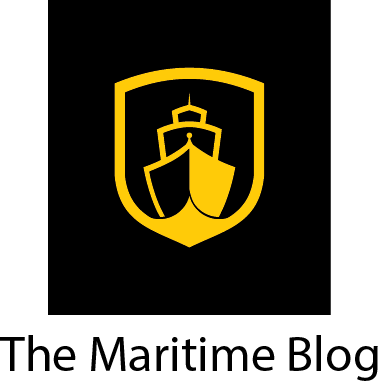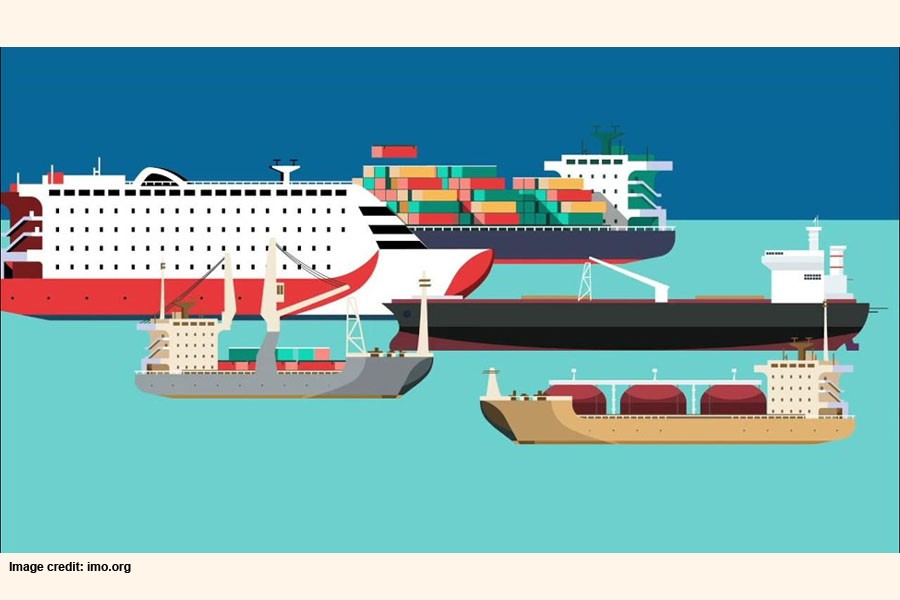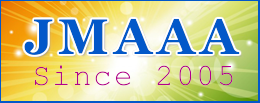search the site
Current News
EMISSIONS EXCLUSION: the International Chamber of Shipping (ICS) has ‘greatly welcomed’ a decision by the COP21 United Nations climate change negotiators to exclude shipping from the ‘Paris Agreement’ on CO2 emission reductions. The ICS said it wanted target-setting to be left with the International Maritime Organisation and promised that there would now be ‘new momentum’ to help the industry deliver ever greater CO2 reductions when the IMO stages talks on the issue in April 2016. The European Community Shipowners’ Association and Maersk had both called for shipping to be included in the text.
VDR WARNING: the shipping industry has been warned that vessel voyage data recorders (VDRs) may be vulnerable to cyber-attacks and hackers. Researchers with the security firm IOActive examined one popular model, the Furuno VR-3000, and determined that its weak encryption and security features could allow hackers to execute arbitrary commands and to access, modify, or erase data stored on the VDR, including voice communications, radar images, and navigational information.
COLLISION PROBE: the UK Marine Accident Investigation Branch (MAIB) is looking into the causes of a collision between a car carrier and a DFDS ro-ro cargoship in the Humber last month. The Panamanian flagged pure car carrier City of Rotterdam suffered significant hull damage in the collision with the Danish registered ro-ro cargoship Primula Seaways in stormy conditions at the entrance to the Humber.
LERWICK VMS: the marine equipment firm Transas is to supply a new vessel monitoring system to Lerwick Port Authority in a £450,000 deal. Due for completion in May 2016, the new system at the Shetland port, which handles more than 5,000 vessels totalling 12m gt annually, will be installed across four sites, including the main port operations building and three remote stations.
CHINESE MERGER: China’s government has given the green light for a merger between the country’s two main state-owned shipping companies, Cosco and China Shipping Group (CSG). The merger will create the world’s fourth largest boxship operator and the new Shanghai-based company will be called China Cosco Shipping Group.
NEWHAVEN DEAL: DFDS has secured a two-year extension to its contract to operate the publicly-owned ferry service between Newhaven and Dieppe. The contract will run until the end of 2017 and covers ship management and route operations. and served with two improvement notices by the Health & Safety Executive after admitting to an oil leak from a pipeline in its Gannet F field in August 2011. The spill had been spotted by a standby vessel and an estimated 218 tonnes was released into the sea.
FEWER SPILLS: accidental oil spills in the North Sea fell to the lowest level on record in 2014, according to figures published last month. The Oil & Gas UK Environment Report 2015 showed that overall trends of emissions, discharges and accidental releases in the UKCS improved during the year.
UKCS CHARTER: UK oil and gas operators have agreed an ‘Industry Behaviours Charter’ setting out plans to cooperate on ‘transformational change’ in the sector. The Oil & Gas UK programme covers issues including efficiencies, new technology and shared learning.
AUCTION PLAN: a French court has ruled that the general cargoship Ocean Jasper, detained in the port of Brest since 2007 after a fatal collision with a fishing boat, will be put up for sale. France’s merchant navy social security body has asked the judge to fix the estimated value at €100,000, while lawyers for the skipper’s widow and the Sokalique’s crew are seeking €300,000.
LNG FIRST: the Finnish firm ESL Shipping is to order what are claimed to be the world’s first LNG-powered large bulk carriers. The two 26,500dwt ice-class 1A ships will be built in China and will start operating in the Baltic Sea in early 2018. CO2 emissions per ton of cargo transported will be reduced by more than 50% compared with current vessels, the company claimed.
BULKER HELD: a Liberian-flagged bulk carrier was detained by the US Coast Guard for more than a month while potential environmental law violations were investigated. The German-owned Cornelia had been held in Duluth Bay on Lake Superior since 2 November.
SUICIDE PROTEST: a 31-year-old seafarer committed suicide by hanging himself at a crewing agency’s office in Manila last month. The seaman, John Elejan, was reported to have been made redundant by the company for unspecified ‘bad behaviour’.
LOST BOXES: a major search and recovery operation was launched in the Channel last month after 12 containers were swept overboard from the Liberianregistered reefer containership Star First in rough weather off Boulogne.
GREEK STOPPAGES: unions representing Greek seafarers and port workers staged a 24-hour strike early in December in protest at plans to cut pensions, increase the retirement age and privatise some of the country’s main ports.
CHINESE CLAMPDOWN: China has revealed plans to introduce Asia’s first emissions control areas (ECAs) within its waters, with a 0.5% sulphur content cap on bunkers to be phased in over the next three years.
VALE SALES: the Brazilian mining firm Vale is planning to sell its remaining 11 Valemax bulk carriers in a US$1.1bn leaseback deal. The company disposed of eight of the 400,000dwt vessels in 2015 and in 2012.
TUG TALKS: French transport minister Alain Vidalies had talks with unions representing tug crews after they warned of strike action in protest at European Union plans to liberalise port towage services.
BUNKER SPILL: an investigation was launched in New Zealand last month after a spillage from the Hong Kong-flagged multipurpose cargoship Ning Po during bunker operations in the port of Whangarei.
RESCUE APPEAL: the French national maritime rescue organisation SNSM has appealed for more donations to support its 24/7 services and its network of 219 rescue stations and 32 training centres. ‘Fatigue is still top safety risk’, MAIB head
Seafarer fatigue remains
the number one safety concern, the head of the UK Marine Accident Investigation Branch (MAIB) told Nautilus International Council members last month.
In a special presentation to the Union’s governing body, MAIB chief inspector Steve Clinch said little had changed since his organisation published a safety study on the problem over a decade ago, with proposals for new regulations requiring extra watchkeepers on ships in short sea trades being ‘kicked into the long grass’ at the International Maritime Organisation.
Mr Clinch said many vessels operating in coastal waters within Europe are effectively ‘guided missiles’, with officers working six-on/six-off rotas for many months and suffering cumulative fatigue as port calls disrupt their already restricted rest periods. However, he said, the MAIB
is continuing to seek action to address the resulting risks and it has recommended that the Maritime & Coastguard Agency returns to the IMO with new proposals for a minimum of a master and two watchkeepers to be carried on all ships in shortsea trades.
Analysis of MAIB investigation reports since 2010 show that common accident causes include failure to carry out risk assessments and permit to work procedures, ship handling errors, breaches of watchkeeping and rule of the road principles, man overboard incidents (mainly from fishing vessels) and a growing number of line handling cases.
Mr Clinch said he was particularly concerned about accidents arising from misuse of electronic chart display and information systems (ECDIS), with many cases raising big questions about the competence of crew and the quality of training.
Investigations have highlighted issues such as knowledge of systems, performance criteria not met during installation, dis abled alarms, user-unfriendliness, and big variations in functionality between manufacturers.
Over-reliance on electronic charts can create a ‘virtual bubble syndrome’, Mr Clinch warned, in which OOWs can become totally focussed on the screen. ‘An officer will not look out of the window and translate what is on the screen to what is happening outside,’ he added. ‘It is almost as if it does not exist if it is not on the screen.’
Part of the problem may arise as a result of being in a transition period from paper charts, he suggested, and part of the problem may be because seafarers are still being trained in the same way as in the 1950s.
The MAIB is also disturbed by evidence of problems with voyage data recorders, Mr Clinch told the meeting. ‘For the accident investigator the VDR is probably the most important investigation tool and it takes away a lot of the guesswork,’ he pointed out.
However, the MAIB has examined more than 230 VDR datasets since 2004 and found that an average of 90% had problems, including archiving data, downloading data, and issues with manufacturer playback. ‘While the VDR makes it easier to understand what is going on, we have recognised that we need to do more to better understand what has happened,’ Mr Clinch said.
Investigation techniques are changing to reflect advances in technology and include the introduction of a system that enables VDR data to be superimposed on a map, which is a particularly good tool for examining multiship scenarios.
The MAIB is also looking at the integration of VDR and AIS data in ship simulators, which enables investigators to run ‘what if’ scenarios, such as examining whether actions could have been taken to avoid an accident, and computers can also be used to create 3D modelling of accidents.
Mr Clinch acknowledged that the term ‘complacency’ could be controversial, but he said the MAIB was not using it in a derogatory way and there were cases that showed how seafarers were involved in accidents after being ‘lulled into a false sense of security’ as a result of doing the same operation repeatedly.
The MAIB’s function is not to apportion blame, Mr Clinch stressed, and it seeks to establish what went wrong so that lessons can be learned for future safety. However, he accepted that criminalisation of the maritime profession is a big problem, with wide fluctuations in the legal and investigative regimes followed in different countries.
Report reveals huge gaps in internet access for seafarers
Seafarers are suffering from a growing disparity in standards of internet access, according to the latest happiness report from Crewtoo, the online social network run by KVH Media Group.
The happiness index monitors seafarer satisfaction levels on a scale of one to 10, and the latest report shows a satisfaction level of 6.37, virtually unchanged from the levels reported in August. However, the report found that issues around connectivity and shore leave have emerged as key issues among seafarers. KVH, which specialises in providing satellite TV and communications systems to ships, said the responses highlighted a growing split in connectivity for seafarers, with some having good, cheap or free access, whilst others are in the ‘stone age’, with virtually no connectivity at all.
The survey also revealed a three-tiered system for shore leave, with some seafarers getting good shore leave access and opportunities, some being able to get ashore occasionally or with difficulty, and those who are denied even the most basic of shore leave.
‘Sadly, it seems from our results that by far the greatest proportion of seafarers suffer the double jeopardy of both poor quality, expensive or non-existent connectivity, and difficult, expensive, or non-existent shore leave,’ the report notes. ‘Having to deal with these parallel concerns would be hard enough, but they are not mutually exclusive. Each impacts greatly on the other and can have a dreadful impact on the happiness of seafarers
(With thanks to the Nautilus Telegraph: https://www.nautilusint.org)


















